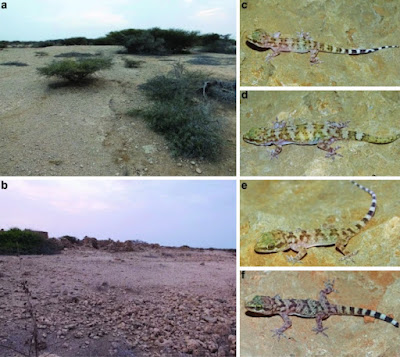




The new species from the Farasan Islands represents the second vertebrate species endemic to the archipelago. Together with the descriptions of the diagnostic features of both species, we provide complete annotated mitochondrial genomes of both holotypes and of holotypes of two other species from the clade to characterize their mitogenomic composition and architecture. Leer más. Ir a Novataxa.

Científicas y científicos de la Universidad Austral, el Centro de Ecología Aplicada y Sustentabilidad (CAPES) y el Instituto de Ecología y Biodiversidad (IEB), entre otras instituciones, desarrollaron la investigación que evalúa el complejo escenario para la conservación de estos animales. Leer más.

En la provincia de Granada no es raro que el sapo partero bético (Alytes dickhilleni) y la rana común (Pelophylax perezi) se reproduzcan en los mismos lugares. Las larvas de ambas especies son parecidas, pueden alcanzar un tamaño similar y convivir en las mismas épocas, por lo que a veces es complicado diferenciarlas. Leer más.
Our results suggest that adult salamanders were potentially displaying an adaptive movement strategy to resist drought conditions by moving away from affected (i.e., dry) areas within the study stream. In addition, movement was likely utilized to access replenished resources in other areas after the severe effects of the drought ended. Therefore, both in-stream and riparian barriers that impede movement may inhibit resilience of stream amphibians during severe droughts. Leer más.









